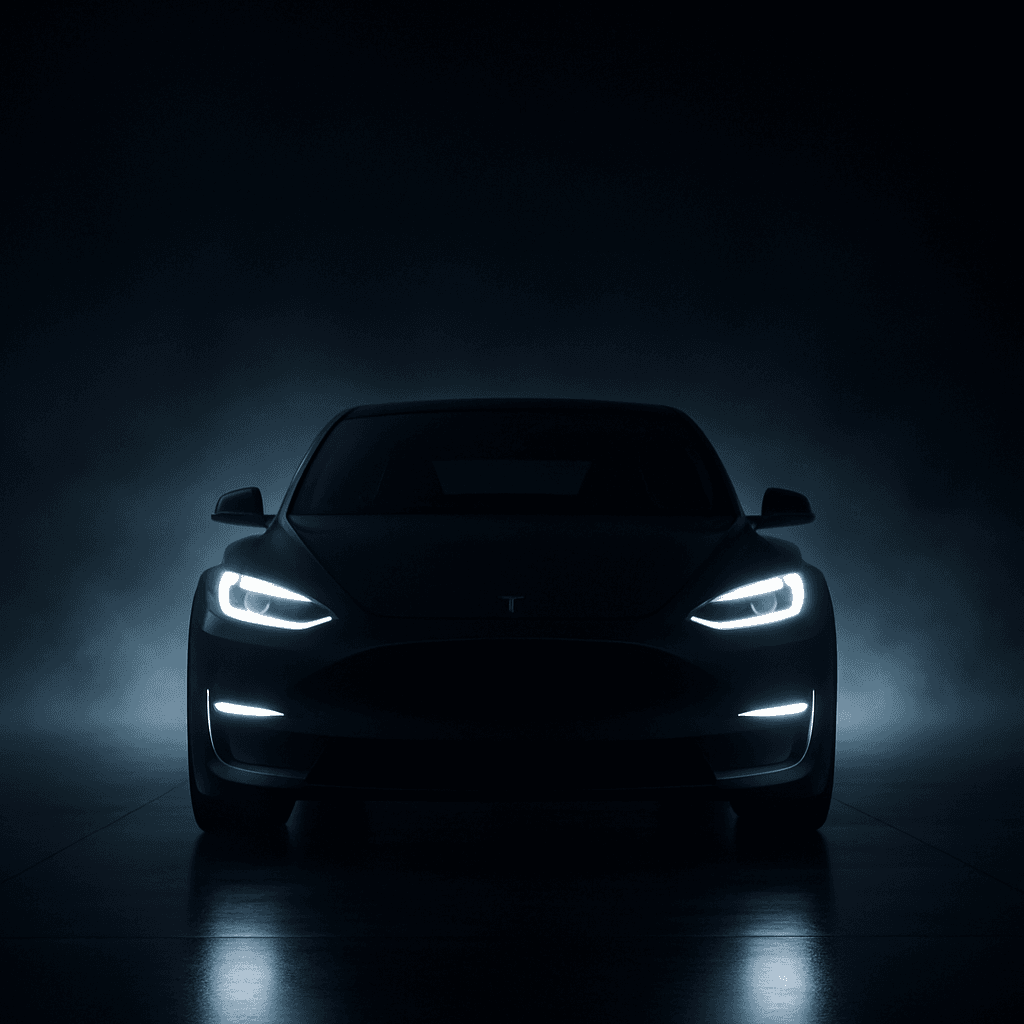Tesla is building mystery around today's announcement with cryptic social media teasers, sending shares up 5% Monday as investors speculate whether the reveal will be the long-awaited budget model, next-generation Roadster, or something entirely different. The timing comes as the EV maker faces a multi-quarter sales slump and mounting competition.
Tesla just pulled off the kind of mystery campaign that would make Apple jealous. Over the weekend, Elon Musk's company dropped not one but two cryptic teaser clips that have the entire EV world guessing what's coming today. The first video shows a spinning, logo-emblazoned component that could be anything from a wheel cover to a turbine, ending with the numbers "10/7" - today's date. The second clip? Just the shadowy outline of vehicle headlights cutting through darkness. Classic Tesla theater. The market ate it up, with shares climbing 5% Monday as speculation ran wild across social media and trading floors. Investors are desperately hoping for something substantial - either the long-promised budget model that could finally make Tesla accessible to mainstream buyers, or the next-generation Roadster that Musk has been teasing since 2017. But knowing Tesla's track record with announcements, it could be something completely different. The timing couldn't be more critical for Tesla. The company hasn't released a genuinely new model since it started shipping the Cybertruck in late 2023, and that angular steel pickup never quite captured the mainstream appeal of the Model 3 or Model Y. Worse yet, the Cybertruck has been hit with eight voluntary recalls in the U.S., hardly the smooth launch Tesla needed. Meanwhile, the company is battling a multi-quarter sales slump that's partly due to consumer backlash against Musk's increasingly polarizing political rhetoric, but also stems from an aging product lineup and fierce competition from companies like Volkswagen and BYD. The numbers tell the story - Tesla lost 36% of its value in a brutal first quarter before staging a 40% comeback in Q3, leaving it up just 12% for the year. That recovery got a boost when Musk himself bought about $1 billion worth of Tesla stock in mid-September, a clear signal he's betting on his own company's future. But Tesla is trying to shift the entire narrative away from traditional auto sales toward its future as a robotics and autonomous driving powerhouse. Last October's "We, Robot" event in Hollywood showcased the Cybercab concept - a sleek, two-seater without steering wheels or pedals that Musk claimed would cost around $30,000. As of the company's last earnings call, it still wasn't in production. The Roadster saga has become almost legendary in its own right. First promised at a , the sports car was supposed to be Tesla's halo vehicle. By 2021, Musk was promising it would "fly," and last year he said it was being redesigned in collaboration with SpaceX. Yet here we are, still waiting. Musk has been promising to turn existing Tesla EVs into robotaxis with a software update for nearly a decade now. The company currently runs human safety drivers in its robotaxi test fleet, while competitors like Waymo and Apollo Go are already operating driverless services in select cities. In humanoid robotics, Tesla's Optimus robots remain more promise than product, while companies like Agility Robotics and Unitree are already selling walking, working robots to customers. This morning brought one concrete development - Tesla announced a new version of its Full Self-Driving supervised technology. But investors are clearly looking for something bigger, something that could justify the company's massive valuation and Musk's grand promises about Tesla's future beyond cars.












